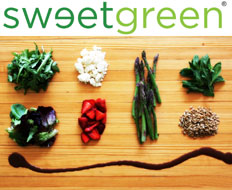We all have different types of friends. There is the friend you have fun with, the friend who is there when times are tough, and the friend you eat lunch with at work. These relationships can be categorized by the level of trust you have for each of them. You may talk about trivial things with the friend you have fun with (less trust) and when you need serious advice, you will reach out to the friend who is there when times are tough (more trust).
This same principle applies to almost everything that we see and interact with in the world. We are constantly taking in information and categorizing it based on our level of trust for the source. For an example of this, take a look at New York newspapers. The king of New York newspapers is The New York Times. The Times has been reporting the news for more than 100 years and is at the pinnacle of trusted news sources. It will only print the stories if there are multiple reputable sources and would never tarnish its reputation by running a tabloid-style story. On the other end of the spectrum is the New York Post. The cover of the Post is regularly strewn with over-the-top headlines about tabloid stories. It is famous for its gossip column, Page Six, and is read more for entertainment than education. The bottom line is, if you read a story in The New York Times, you trust the information far more than if you read it in the New York Post.
As business owners, you want to create a relationship with your customers that is similar to the one The New York Times has with its readers, because customers are clearly more likely to buy something from a brand they trust. But, as I mentioned earlier, the Times has spent more than 100 years earning its stellar reputation, and my guess is that you don’t have that same time. You need customers now. Thankfully, in modern days, it takes much less time to earn that trust. With a little help from the Internet and an unyielding focus on generating quality content, you can establish your business as a trusted source in months. So how do you do it?
CLOSER LOOK
SWEETGREEN
LOCATIONS: 20
WHERE: Washington, D.C; Maryland; New York; Virginia; Pennsylvania
ESTABLISHED: 2007
OWNERS: Jonathan Neman, Nicolas Jammet, and Nathaniel Ru
SIGNATURE ITEMS: Salads, Wraps, Soups, Yogurt, Juices
Any business that is offering a quality product with excellent branding is inherently a more trusted source than its competitors. So step one in the pursuit of trust is to offer a great product with great branding. Don’t ever skimp on quality, and make sure your customer leaves happy, even if you have to lose a few bucks. The next step is to establish an authentic and strong voice. Think about your brand’s core values and speak to your customers from an honest place. Be your true self. The marketplace will reward you for being honest, open, and authentic. Use this voice to generate quality content, a.k.a. your brand story. This story should include your brand bio, core values, and company mission statement, and is crucial in establishing what your brand is and what it is all about.
The next step is to use this voice and content in every communication channel, from your website to your menus. It needs to be plastered on your forehead. Then, open a two-way channel of communication that can be used to interact with your consumers, such as an e-mail newsletter, blog, or social media account. My preferred channel is to create a blog (easier to update regularly with new information than a website) that is connected directly to all of your social media platforms, such as LinkedIn, Facebook, Instagram, Twitter, and Google Plus. This can be done using WordPress or a similar blogging program for less than $50 and two to three hours of your time. I also recommend purchasing a unique domain online, which can be done for less than $20.
From here, the key is creating content that is compelling. Do not use this blog to sell or advertise, because when it comes to building trust, greed is not good. Your blog exists to educate, activate, and connect with your customers. Create features on how you make your pizza dough or tell the story of a farmer that supplies your restaurant. Work on exposing the best parts of what you do, because it will give your product substance and add layers to your brand story.
The next step is to bring the content to life. This is where your business gets to benefit by creating an event or experience for your customers that can drive revenue and relevance. The perfect example of this is the annual Sweetlife Festival thrown by Washington, D.C.–based Sweetgreen. Founded by three students, Sweetgreen is a growing fast-casual concept that specializes in salads, wraps, bowls, and other types of organic and sustainable foods.
Sweetgreen isn’t just a restaurant; it’s also a movement with mission statements such as, “We exist to create experiences where passion and purpose come together,” and core values such as “keeping it real” and “cultivating authentic food and relationships.” The Sweetlife Festival is a charitable concert that brings to life all things Sweetgreen. The festival features the most popular independent music acts and combines them with activated spaces such as “The Locals,” a tent featuring the best local food offerings in D.C., and “The Tavern,” a makeshift beer hall featuring the best locally brewed beers. Through this event, Sweetgreen has managed to meaningfully connect with its core demographic, generate an immense amount of positive press, and prove once again that success is always a matter of trust.












